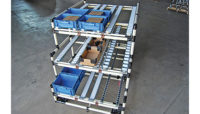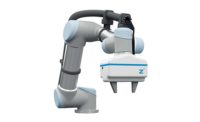Obeyas are all over manufacturing in 2018. For manufacturers that have done their homework, an Obeya is a powerful resource the gels seamlessly with process improvement, but manufacturers that believe an Obeya is just a set of walls and some whiteboards will be sadly mistaken; there’s more to an Obeya than just creating a room. Below you’ll find a list of some essential practices that manufacturers should be sure to follow when designing an Obeya for their factory.
Determine Your Intention
Before building an Obyea of your own, a manufacturer has to be able to identify the purpose of the room itself. Whiteboards and charts can only get you so far without context and intent. Is your Obeya going to be used for problem-solving on a specific process in your supply-chain, or used as a centralized hub for shipping and receiving? Ideally, you want to be able to walk into an Obeya and instantly understand what is being tracked and measured. The best way to do that is by making your most important metrics and documents easily accessible at all times.
Tool for the Job: Magnatag Document Display ChartJackets®
Keep It Close To Home
An Obeya should be as close as possible to the project or process that is of focus. It’s all a part of adding a sense of relevancy to your workspace. The last thing you want to do is to confuse your team and lose focus on the project at hand—after all, the entire point of an Obeya is to maintain and improve focus. We recommend finding or creating a dedicated space directly on your shop floor.
Tool for the Job: Magnatag WhiteWall® Magnetic Dry Erase Panel
Think About Utility
People often refer to an Obeya as a room, but in actuality, an Obeya can take the shape of any location. Rather than focus on the shape or location of an Obeya, adopters should be more concerned with making sure the environment can facilitate the entirety of your team. The focus of building an Obeya should be on three things: tools, people, and space. Without the proper visuals, your Obeya will be unable to reflect the focus of your project—not to mention your team will be completely left in the dark. You want to be sure to incorporate tools that encourage communication, track changes as they happen, and highlight areas of improvement when possible. No one Obeya is the same; when it comes to creating an Obeya for your factory, it’s important to keep in mind that design and utility will vary based on your team and location needs.
Tool for the Job: Magnatag Rotating Magnetic Bulletin Towers
Use a Customer-First Approach
There’s a fine line of distinction when it comes to what exactly classifies as an Obeya. You can’t just find yourself an empty room, throw in a few whiteboards and then: voilà, you’ve created an Obeya. If the room you’re using for an Obeya has all the necessary tools in place but is primarily used for internal communication problems, then that’s not an Obeya. An Obeya should be used for solving issues that have an impact on the customer. The room itself should encompass a problem and its components while providing individuals with milestones and solutions to help remedy the situation. An Obeya is not just a room guided by conversation, rather, an Obeya is a room and a collection of materials that guide the conversation.
Tools For the Job: Magnatag Lean Manufacturing Systems
All Magnatag whiteboard systems and accessories are made in the USA.
Call: (800) 624-4154







